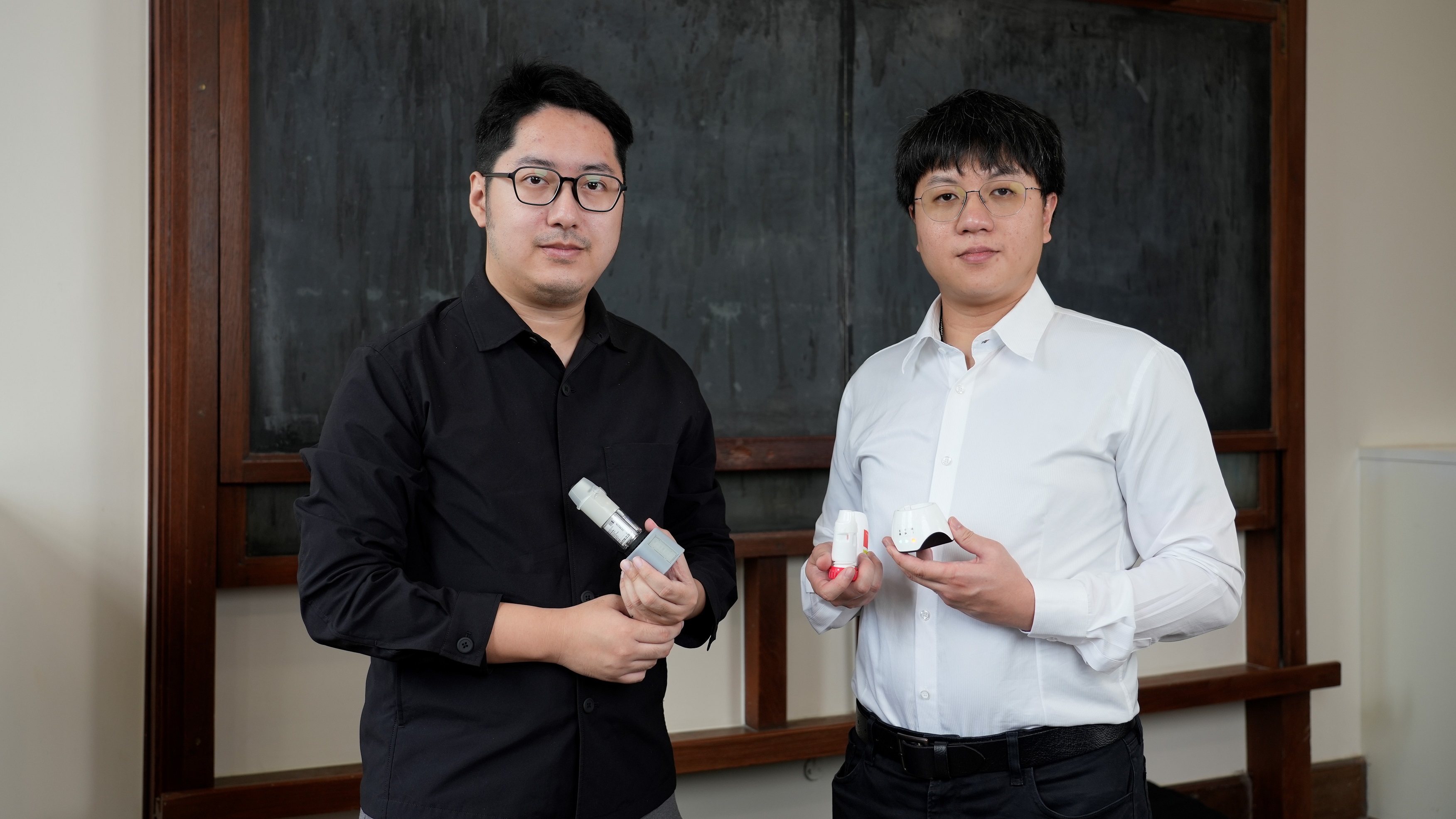What it does
By integrating acoustic-airflow conversion algorithm, sensing chip system, and IoT algorithm, it provides medication guidance and real-time correction, automatically logs medication frequency and status, and allows access to patients’ respiratory conditions.
Your inspiration
Globally, the prevalence rate of difficult-to-treat asthma is 17% of all asthma patients, and if medication is effectively controlled, the prevalence rate could be reduced to 3.7%. However, the particularity of chronic respiratory diseases has two major unmet clinical needs: 1) Inhaled drugs usage has high error rate and poor drug compliance. 2) Respiratory chronic diseases attacks are hard to predict. At present, asthma management in China is still in its infancy and each nurse/doctor is responsible for managing 5-10 asthma patients. We hope to enhance the efficiency through our design, achieving a ratio of 1:1000 in patient management.
How it works
Shuimu Breathing is compatible with various inhalers available on the market. It's easy for patients to install onto an inhaler and start to use. With a microphone sensing chip integrated at the bottom, it captures the sounds of patients using the medication, records changes in bronchial wheezing during asthma attacks, and converts acoustics signals to airflow stats via advanced algorithms. It guides and corrects the way patients take the drug in real-time. The relevant data are uploaded to Cloud via Bluetooth. With the patient sound information gathered, we develop deep learning algorithms based on big data. Our solution can improve whole process of chronic disease management, quantify the inhalation mode of inhaler usage and track medication status. It converts them into data that can be referred to by doctors and health personnel. This will predict the timing of the patients’ attack and warn them to seek medical treatment or use acute drugs in advance.
Design process
Our goal is to convert pressure into airflow calculations and use sound signals to estimate the airflow value when patients use inhalers. It took us 3 years for product iteration. Our first prototype is a mouthpiece embedded with a high-speed MCU and a small pressure sensing chip (< +/-100pa error). We attached it to the inhaler and conducted relevant experiments in hospitals to validate the airflow and pressure calculation methodology, and it worked. For the second generation, we added an acoustic sensor at the bottom, because we soon found it not compatible with current products and it was hard to implement and operate a complete redesign. By employing a placebo-controlled group, we established the benchmark for airflow stats. We them confirmed the accurate level for acoustic sensing involving both airflow and acoustic sensing tests. Additionally, to reduce background noise, we applied principles of sound diffraction to enhance the amplitude of frequencies between 8 to 10 kHz – inspired by the design of instrument speaker. Our final design discarded the airflow sensing chip on the mouthpiece to enhance product compatibility. We exclusively used the integrated microphone sensing chip system at the bottom of the inhaler to capture the sound of patients using the medication.
How it is different
It provides an all-in-one medical solution, integrating functions of correct and standardized medication and physiological monitoring. With advanced algorithms, it develops personalized health model of patients, supports remote diagnosis, and offers acute attack predictions. Current products in the market mainly address single issues, offering partial and simple documentation. Their airflow meter can only be installed onto a new device and cannot adapt to complex usage scenarios. These are not effective for low-adherence patients, esp. children. Our design utilizes an acoustic sensing system and applies acoustic-airflow analysis, which can adapt to a variety of inhalers on the market. It captures medication sounds and records changes in bronchial wheezing when asthma attacks. Patients' medication is corrected in real time and the system will automatically record the frequency and status and upload them to the cloud. They do not need to go to hospital often.
Future plans
1) We’re offering free training for seniors and children on inhaler use in health centers and will expand to other hospitals. We hope to increase patient management efficiency through more intelligent approach to long-term asthma disease management for hospitals and healthcare professionals. The relevant data serve as foundation to intelligent personalized management system. 2) With sufficient data we’ll collaborate with pharmaceutical companies on healthcare projects to establish medication model and develop medical device. It enhances corrections in clinical drug trials and tracking, ensuring accurate medication delivery to the patients.



Share this page on
LinkedIn
Facebook
Twitter